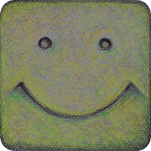Nonverbal communication
Body language or kinesics
It is important to understand the meaning of body language. One should remember that a gesture, facial expression or body posture should always be analysed in the context of personal behaviour as well as individual preferences.
-
Head nods
Confirmation and agreement are usually expressed by the head moving up and down. One should be careful in Bulgaria, though; in that country nodding means disagreement.
- Hand gestures
In most European countries hand shaking is moderate and short (Table 3.1). Both too soft and too hard shake is not appropriate in every day and business settings. You should avoid clapping as not all cultures and situations call for hand clapping.
SOME BASIC RULES CONNECTED WITH OFFERING HANDS: - A man waits for a woman to offer her hand.
- In most countries women shake hands with men; however, there are exceptions to the rule.
- Some gestures can be used in the place of handshaking, e.g. Namaste or bowing.
-
Eye communication
Oculesics is the study of eyes and eye movement when communicating. It provides information on what we are thinking and feeling, and since we rely heavily on the sense of sight, eye contact is the most prominent of nonverbal communica-tion.
Situation 1: Two people speaking
When you speak always look straight at the person. The length of eye contact depends on a given culture but usually it is about 2–3 seconds. In some cultures, however, e.g. in Finland, eye contact is not very intense and people may avoid looking straight at you. You should not feel embarrassed or annoyed as it is part of their cultural behaviour.
Situation 2: One speaker and a group of listeners
When you participate in a discussion or you deliver a talk to a group, you should remember that everybody wants to look at you and wants to feel your eyes on them. Therefore, it is advisable to look around from time to time, paying attention to all participants in a given room.
-
Facial expressions:
Our faces show feelings and moods. Some of us try to hide their feelings and even attend courses to learn how to do it. Facial expressions include: surprise, disbelief, agreement, disappointment, anger. They can also indicate interest, ask for feedback or help synchronise speech with gestures. Today facial expressions are commonly used as icons in emails, text messages or even drawings.



-
Appearance
There are many ways of following fashion or your own style. When abroad, one should be careful choosing clothes for work, parties and special occasions. There are certain codes to be followed. For example, at work one prefers more formal clothes compared to weekend parties full of casual style. How you dress signals to your friends or workmates what you think about them. Your image and what impression you make on strangers is also influenced by your appearance.
 TIPS FOR STUDENTS
TIPS FOR STUDENTS
Namaste is a conventional Hindu expression on meeting or parting, used by the speaker usually while holding the palms together vertically in front of the bosom.
Table 3.1. Types of>handshake – source: after R. Gesteland, p. 72
|
Country |
Type of handshake |
Country |
Type of handshake |
|
Germans |
firm, brisk, frequent |
Arabs |
gentle, repeated and lingering |
|
French |
light, quick, frequent |
South Asians |
gentle, often lingering |
|
British |
moderate |
Koreans |
moderately firm |
|
Latin Americans |
firm & frequent |
Most Asians |
very gentle & frequent |
|
North Americans |
firm & frequent |
Poles |
firm & frequent |
|
Finns |
moderate |
|
|